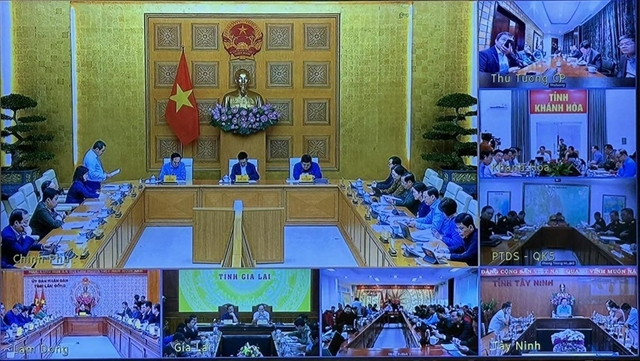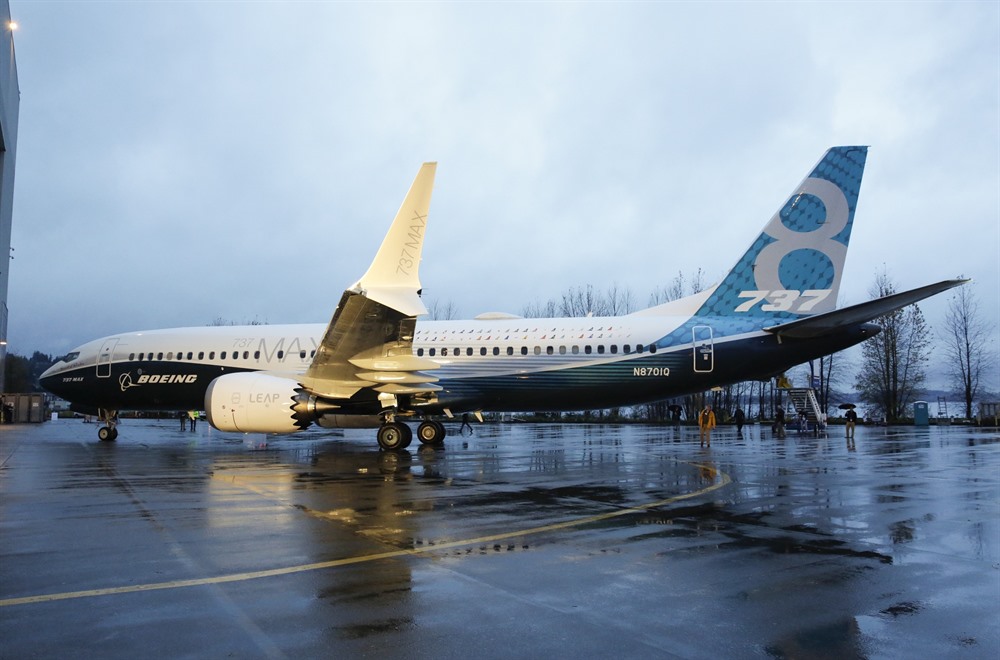 Society
Society

The Civil Aviation Authority of Việt Nam (CAA) announced today that from 10am on March 13, Boeing 737 MAX jetliners will not be allowed to fly in Vietnamese airspace.
 |
| A Boeing 737 MAX 8. — AFP/VNA Photo |
HÀ NỘI — The Civil Aviation Authority of Việt Nam (CAA) announced on Wednesday that from 10am on March 13, Boeing 737 MAX jetliners will not be allowed to fly in Vietnamese airspace.
After an emergency meeting on Wednesday morning, the country’s aviation regulator said it decided to halt the issuance of new flight permits for 737 MAX aircraft operated by foreign airliners in Vietnamese airspace as well as suspend all granted permits until a new decision is issued.
It said the decision was made to ensure air safety after “assessing the information related to the operation of the Boeing 737 MAX”.
The move came after New Zealand and the European Union earlier on Wednesday joined the growing list of countries and regions to ground the model line, likely as a precautionary measure pending the results of the investigation into the deadly crash in Ethiopia on Sunday that left all 157 people on board a new Boeing 737 MAX 8 dead shortly after takeoff.
This was the second crash of the model in less than six months after a brand-new Lion Air plane crashed in October last year, also leaving no survivors.
The US Federal Aviation Administration (FAA) continued to allow the operation of the planes in US airspace and maintained on Tuesday that its “review shows no systemic performance issues and provides no basis to order grounding the aircraft”, but promised to carry out “immediate and appropriate action” if any safety issues should be detected, according to Reuters.
In a statement released on Tuesday, Boeing said it has “full confidence in the safety of the 737 MAX” and there is no need to issue new guidance to operators given available information.
CAA said on Monday there are currently no Vietnamese airlines operating the controversial model and that it is not reviewing licences to operate the aircraft for the moment.
All aircraft rented or bought back to Việt Nam will need to first obtain licences from CAA for the model, as well as a permit for each plane. The assessment for granting model licences is mostly based on US FAA or EU aviation authority approvals, CAA Võ Huy Cường told Tiền Phong (Pioneer) newspaper, as the country does not have the capacity to review in detail every process that goes into making an aircraft. — VNS
What is the 737 Max? The 737 Max is Boeings latest single-aisle passenger jet, designed to replace the ageing second and third generation 737s with the later coming into service in 1997. The MAX made its debut in 2006 and over 5,000 orders have been placed with Boeing by airlines around the world. The MAX like its third generation predecessors has a fly-by-wire system which means the conventional manual controls of an aircraft have been replaced by electronics and sensors. Why is it in the headlines? Despite being a baby by aeroplane standards, the MAX has been involved in two high profile crashes in a span of less than five months. In October, a Lion Air MAX carrying 189 people crashed into the sea. Now, with the crash of the Ethiopian Airlines (normally a very safe airline), people are scrutinising the new Boeing aeroplanes. What are angle of attack indicators? Angle of attack indicators is an instrument built into the plane that is designed to monitor how much lift is generated at a given airspeed. In layman’s terms, the instrument tells the pilot if the aeroplane is generating enough thrust to keep the plane flying in the air. The MAX has an automated safety system which points the nose of the plane down if the Angle of Attack Indicator is signalling the cockpit that the plane is not moving fast enough to stay aloft. By pushing down the nose, the aircraft is attempting to gain speed before levelling off. Why is the indicator in the news? A faulty angle of attack indicator was blamed for the October Lion Air crash. The plane in question had several problems before the flight of the crash and maintenance had signed off on its airworthiness. Now with another crash happening so soon, speculation is rife that there may be similar problems with the indicator in the Ethiopian crash. — ANN |




